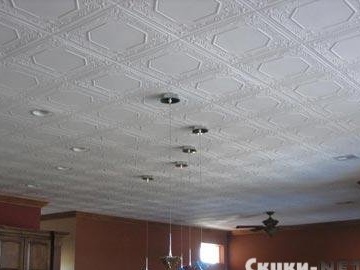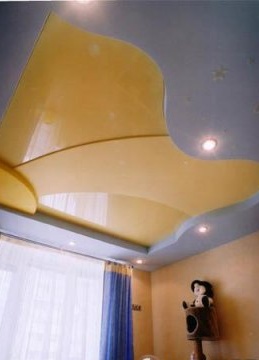
False ceilings are designed to mask various communications (electrical wiring, heating pipes, air conditioning systems) so that, if necessary, provide them with trouble-free access. In addition, they mask a variety of coating defects, and also provide additional opportunities for the installation of fixtures.
False ceilings consist of a metal frame on which the plates are fixed. Their thickness ranges from 6 to 20 mm. The higher the thickness of the plate, the better its heat and sound insulation qualities. In addition, the plates differ in appearance: manufacturers of suspended ceilings offer a wide range of options for any room. Most often, plates are made of materials based on mineral fiber or fiberglass - this further reduces heat loss. However, sometimes other materials are also used, the most common of which is drywall.
According to the type of installation, suspended ceilings are divided into two types: visible and invisible. However, regardless of the type of installation, both standard and design lighting systems are easily installed in them. During the installation of suspended ceilings, some simple rules should be observed. One of them is compliance with the atmospheric and temperature background of the room in which the installation of suspended ceilings. As well as some types of floor coverings or wall-paper, plates should "mature" during the day.
In addition, during installation, it should be remembered that the plates of one manufacturer are likely to be incompatible with the frame of another.
False ceilings are mounted in two stages: first, a frame is attached to the building structure, after which plates are installed on it. It should be borne in mind that most of the materials from which the plates are made, irritate the respiratory tract and skin during processing, so work should be done with gloves and a respirator.
At the points of the proposed installation of additional equipment (fixtures or communications), additional suspensions should be installed.
Installation of ceiling tiles begins from the middle of the ceiling, gradually moving to the edges. To avoid gaps, each plate should be carefully measured.
If during operation any element of the suspended ceiling is damaged or damaged, it can be easily replaced.

